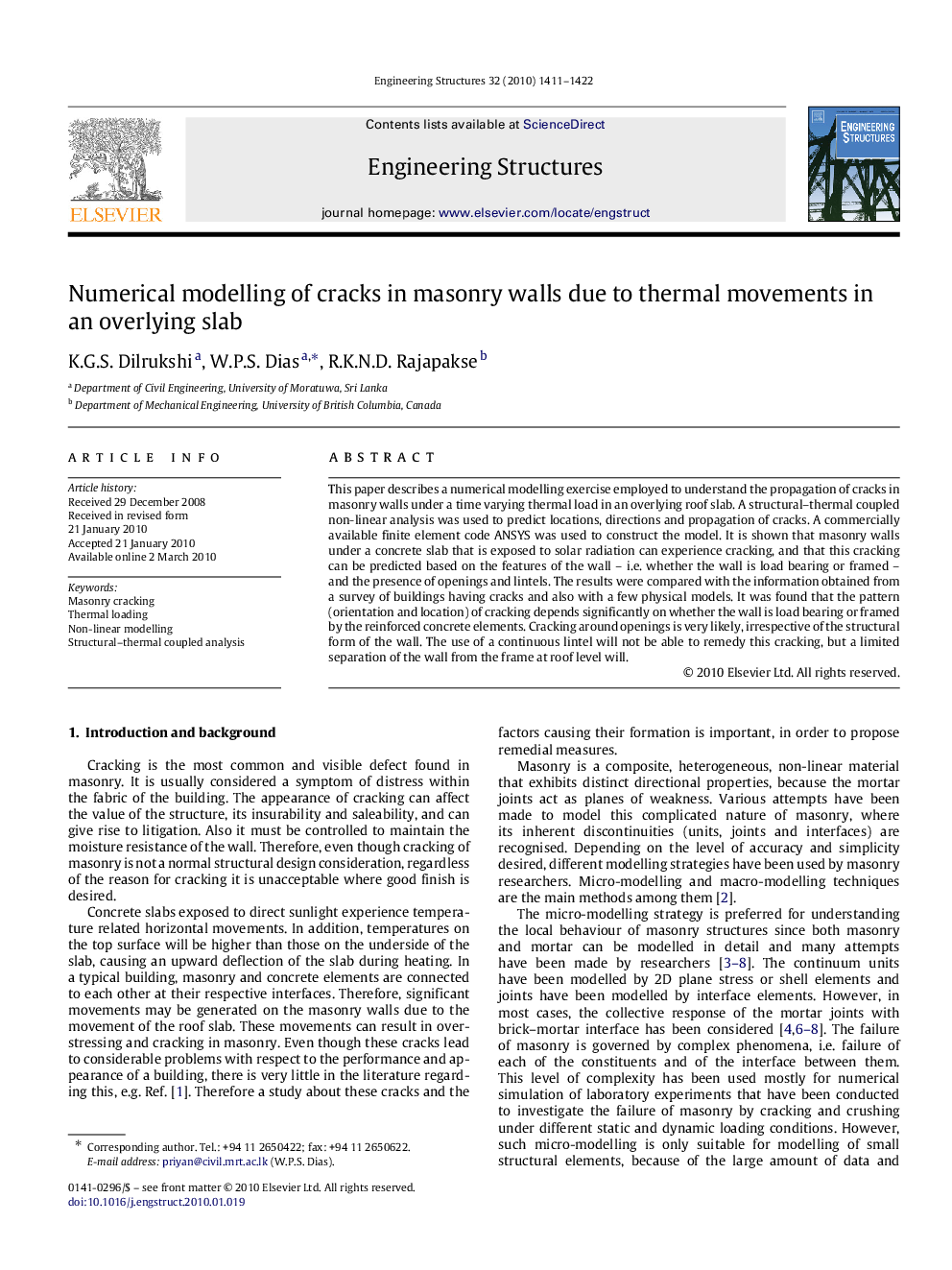| Article ID | Journal | Published Year | Pages | File Type |
|---|---|---|---|---|
| 268573 | Engineering Structures | 2010 | 12 Pages |
This paper describes a numerical modelling exercise employed to understand the propagation of cracks in masonry walls under a time varying thermal load in an overlying roof slab. A structural–thermal coupled non-linear analysis was used to predict locations, directions and propagation of cracks. A commercially available finite element code ANSYS was used to construct the model. It is shown that masonry walls under a concrete slab that is exposed to solar radiation can experience cracking, and that this cracking can be predicted based on the features of the wall–i.e. whether the wall is load bearing or framed–and the presence of openings and lintels. The results were compared with the information obtained from a survey of buildings having cracks and also with a few physical models. It was found that the pattern (orientation and location) of cracking depends significantly on whether the wall is load bearing or framed by the reinforced concrete elements. Cracking around openings is very likely, irrespective of the structural form of the wall. The use of a continuous lintel will not be able to remedy this cracking, but a limited separation of the wall from the frame at roof level will.
